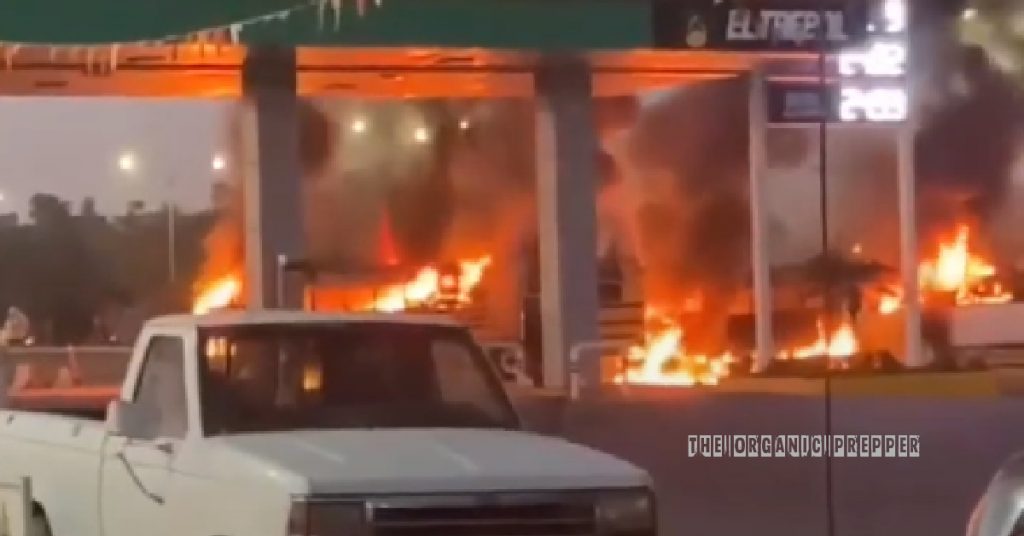by Daisy Luther, The Organic Prepper:

When the system begins to fail, society can quickly crumble. Two such events have occurred recently.
Let’s reflect on the Brumadinho mining dam disaster and see about the recent cartel attack in Culiacán, Mexico, in order to discuss how these kinds of events can affect our daily lives, particularly during times of crisis.
In his work, Selco explains what occurs to individuals and society as a whole when the system completely fails. He’s unmatched and possibly one of the greatest sources to look at because of how effectively his blunt and honest style is to convey the drama and urgency of the unthinkable.
TRUTH LIVES on at https://sgtreport.tv/
I haven’t experienced a civil war, but I can speak about other SHTFs, such as Thirdworldization, or crime that occurs when a crisis arises.
The recent events in Mexico serve as the ideal illustration.
The Brazilian uprising of January 8th took place as I was just beginning to write about it, so the immediacy of the situation took priority.
However, here’s the quick rundown:
The Sinaloa Cartel launched a significant offensive against the Mexican government and military in the first week of January in response to the detention of their leader.
“Mexican authorities have captured Ovidio Guzmán, a son of incarcerated drugs kingpin Joaquín “El Chapo” Guzmán, prompting a wave of retaliatory attacks from cartel gunmen in the northern city of Culiacán.
After a night of violence, gunmen exchanged fire with security forces, blocking roads with burning vehicles and shooting at army helicopters and police aeroplanes bringing reinforcements to the city.
According to one resident, heavy fighting raged for hours after Guzmán – a key figure in the Sinaloa cartel since the arrest of his father – was arrested in the city early on Thursday.” [source]
(If a few good books about this topic are TLDR, but you still want a broad view on this, I advise watching the Netflix’s original series Narcos. It’s Hollywood, so a little dramatized for entertainment, but it still gives a good outline of the major players and events.)
A well-armed, organized, numerous, and deadly gang of criminals put on a massive and scary exhibition of strength and firepower.
You’ve probably seen the videos making the rounds on social media and in the news, of passengers trying to take cover from the gunfire inside of an airplane, sicarios attempting to take down helicopters, groups firing heavy artillery towards the troops in the streets and avenues, and drug soldiers raiding homes.
An entire region of a democratic nation was in dread as a result of the Sinaloa Cartel offensive to put pressure on the government and force the release of Guzmán. The estimated death toll from the conflict is 19 accused cartel gunmen and 11 members of the military and law enforcement.
I’ve witnessed enough cartel activity to know that there are generally many more ‘unofficial’ victims and collateral in these drug wars, so I’m sure there are more to add to that total. It’s still ongoing, too, I’m sure – just not as openly as it has been.
The fact that such savagery produced significant stir in a populace accustomed to the cartels and their ways says something about the ferocity of the struggle, even though it may startle my first-world colleagues. Not to mention that it all took place not far from the US.
Think of that for a moment: paramilitary criminal groups directly attacking the government of a sizable democratic state.
And this is not unprecedented.
Something similar occurred in Brazil over two decades ago. In May 2006, the PCC – also known as First Command of Capital, a well-known criminal organization – unleashed a wave of violent attacks against the police and government officials and buildings. That happened in São Paulo, the wealthiest state in Brazil and the 16th in the world.
The gang instigated a mutiny in 76 jails to oppose the transfer of more than 700 of its members to highest security prisons. Then, street members were ordered to indiscriminately target police, police stations, state prosecutors, and other authorities. The forces responded by sending out a full contingent to confront the assailants.
Wild rumors and curfew announcements kept the terrified population indoors. Buses did not leave the garages (more than 40 were set on fire), and shops, schools, and businesses remained closed. My city, which has 13 million residents and is the biggest in Brazil, had deserted streets for days. At the end of the attack, there were 60 agents and 500 civilian casualties (PCC members and other suspects), and more than a hundred were injured. In ten days only.
About organized crime.
It’s enormous, it’s all around us, growing in the underground. Most of the time, we only see and hear about it when something of magnitude erupts, or if we investigate it. Some individuals don’t even know it exists, how it functions, how powerful and pervasive, as well as how deadly it can be. They think it’s like in the movies, but it’s very different in reality.
When everything is normal, mafias, cartels and other organized criminal operations stay more or less contained and operating mainly underground. They keep expanding and filtering into civil society through corruption or threats (plata o plomo – silver or lead). But also in more surreptitious, sophisticated, and “official” ways, such as financing everything from the election of local leaderships and politicians to the graduation of lawyers and promotion of DAs.
Tax revenue falls during a slump. Institutions deteriorate as a result of underfunding of the governmental apparatus. Of course, this also applies to the crime-fighting infrastructure. Criminals feel empowered and come out, making the situation worse. Though it has money and power, organized crime is not listed in the S&P 500 or the Nasdaq. That is to say, crime always tends to increase during economic downturns.
Read More @ TheOrganicPrepper.ca



